A 40–50 GHz RF Front-End with Integrated Local Oscillator Leakage Calibration
Abstract
:1. Introduction
2. Architecture of the Front-End
3. Circuit Design Methodology
3.1. Detection Mixer
3.2. Differential Quadrature Mixer
3.3. Power Amplifier
4. Experimental Results
5. Conclusions
Author Contributions
Funding
Conflicts of Interest
References
- Zhou, P.; Chen, J.; Yan, P.; Yu, J.; Hu, J.; Dong, H.; Wang, L.; Hou, D.; Gao, H.; Hong, W. A −28.5-dB EVM 64-QAM 45-GHz Transceiver for IEEE 802.11aj. IEEE J. Solid-State Circuits 2021, 56, 3077–3093. [Google Scholar] [CrossRef]
- Sadhu, B.; Tousi, Y.; Hallin, J.; Sahl, S.; Reynolds, S.K.; Renstrom, O.; Sjogren, K.; Haapalahti, O.; Mazor, N.; Bokinge, B.; et al. A 28-GHz 32-element TRX phased-array IC with concurrent dual-polarized operation and orthogonal phase and gain control for 5G communications. IEEE J. Solid-State Circuits 2017, 52, 3373–3391. [Google Scholar] [CrossRef]
- Yang, B.; Yu, Z.; Lan, J.; Zhang, R.; Zhou, J.; Hong, W. Digital beamforming-based massive MIMO transceiver for 5G millimeter-wave communications. IEEE Trans. Microw. Theory Tech. 2018, 66, 3403–3418. [Google Scholar] [CrossRef]
- Li, X.; Chen, W.; Li, S.; Wang, Y.; Huang, F.; Yi, X.; Han, R.; Feng, Z. A High-Efficiency 142–182-GHz SiGe BiCMOS Power Amplifier With Broadband Slotline-Based Power Combining Technique. IEEE J. Solid-State Circuits 2022, 57, 371–384. [Google Scholar] [CrossRef]
- Zhou, P.; Chen, J.; Yan, P.; Hou, D.; Gao, H.; Hong, W. A Broadband Power Amplifier in 130-nm SiGe BiCMOS Technology. IEEE Solid-State Circuits Lett. 2021, 4, 44–47. [Google Scholar] [CrossRef]
- Kim, H.; Park, B.; Song, S.; Moon, T.; Kim, S.; Kim, J.; Chang, J.; Ho, Y. A 28-GHz CMOS direct conversion transceiver with packaged 2×4 antenna array for 5G cellular system. IEEE J. Solid-State Circuits 2018, 53, 1245–1259. [Google Scholar] [CrossRef]
- IEEE Standard 802.11aj-2018 (Amendment to IEEE Standard 802.11-2016 as amended by IEEE Standard 802.11ai-2016 IEEE Standard 802.11ah-2016); IEEE Standard for Information Technology–Telecommunications and Information Exchange between Systems Local and Metropolitan Area Networks–Specific Requirements Part 11: Wireless LAN Medium Access Control (MAC) and Physical Layer (PHY) Specifications Amendment 3: Enhancements for Very High Throughput to Support Chinese Millimeter Wave Frequency Bands (60 GHz and 45 GHz). IEEE: Piscataway, NJ, USA, 2018; pp. 1–306.
- Adjei-Frimpong, B.; Csurgai-Horvath, L. Q-band Indoor Propagation Modelling and Measurements for 5G. In Proceedings of the 2019 European Microwave Conference in Central Europe (EuMCE), Prague, Czech Republic, 13 May 2019; pp. 141–144. [Google Scholar]
- Wells, J. Faster than fiber: The future of multi-Gb/s wireless. IEEE Microw. Mag. 2009, 10, 104–112. [Google Scholar] [CrossRef]
- Gültepe, G.; Kanar, T.; Zihir, S.; Rebeiz, G.M. A 1024-Element Ku-Band SATCOM Phased-Array Transmitter with 45-dBW Single-Polarization EIRP. IEEE Trans. Microw. Theory Tech. 2021, 69, 4157–4168. [Google Scholar] [CrossRef]
- Alhamed, A.A.; Rebeiz, G.M. A Global Multi-Standard/Multi-Band 17.1–52.4 GHz Tx Phased Array Beamformer with 14.8 dBm OP1dB Supporting 5G NR FR2 Bands with Multi-Gb/s 64-QAM for Massive MIMO Arrays. In Proceedings of the 2021 IEEE Radio Frequency Integrated Circuits Symposium (RFIC), Atlanta, GA, USA, 20–25 June 2021; pp. 99–102. [Google Scholar] [CrossRef]
- Alhamed, A.; Gultepe, G.; Rebeiz, G.M. 16–52 GHz 5G Transmit and Receive 64-Element Phased-Arrays with 50–51.7 dBm Peak EIRP and Multi-Gb/s 64-QAM Operation. In Proceedings of the 2022 IEEE/MTT-S International Microwave Symposium—IMS 2022, Denver, CO, USA, 19–24 June 2022; pp. 926–928. [Google Scholar] [CrossRef]
- Maiwald, T.; Potschka, J.; Kolb, K.; Dietz, M.; Hagelauer, A.; Visweswaran, A.; Weigel, R. A Broadband Zero-IF Down-Conversion Mixer in 130 nm SiGe BiCMOS for Beyond 5G Communication Systems in D-Band. IEEE Trans. Circuits Syst. II Express Briefs 2021, 68, 2277–2281. [Google Scholar] [CrossRef]
- Naskas, N.; Alexiou, N.; Gkardiakos, S.; Agathokleous, A.; Tsoutsos, N.; Kontaxis, K.; Ntounas, G.; Kousparis, I. Wideband mmWave Transceiver IC for 5G Radios. In Proceedings of the 2022 17th European Microwave Integrated Circuits Conference (EuMIC), Milan, Italy, 26–27 September 2022; pp. 196–199. [Google Scholar] [CrossRef]
- Lin, C. High-Frequency Electronic Circuits; Electronic Industry Press: Hong Kong, China, 2010. [Google Scholar]
- Levinger, R.; Katz, O.; Sheinman, B.; Carmon, R.; Ben-Yishay, R.; Mazor, N.; Pivnik, S.; Elad, D.; Socher, E. An E-band 40 dB dynamic range multi-tank power detector in 0.13 μm SiGe technology. In Proceedings of the IEEE European Microwave Integrated Circuit Conference (EuMIC), Rome, Italy, 6–7 October 2014; pp. 170–173. [Google Scholar]
- May, J.W.; Rebeiz, G.M. Design and Characterization of W-Band SiGe RFICs for Passive Millimeter-Wave Imaging. IEEE Trans. Microw. Theory Tech. 2010, 58, 1420–1430. [Google Scholar] [CrossRef]
- Li, S.; Chi, T.; Wang, H. Multi-Feed Antenna and Electronics Co-Design: An E-Band Antenna-LNA Front End With On-Antenna Noise-Canceling and Gₘ-Boosting. IEEE J. Solid-State Circuits 2020, 55, 3362–3375. [Google Scholar] [CrossRef]
- Gavell, M.; Zirath, H.; Ferndahl, M.; Gunnarsson, S.E. A linear 70–95 GHz differential IQ modulator for Eband wireless communication. In Proceedings of the IEEE MTT-S International Microwave Symposium, Anaheim, GA, USA, 23–28 May 2010; pp. 788–791. [Google Scholar]
- Tsai, J.H. Design of 1.2-V broadband high data-rate MMW CMOS I/Q modulator and demodulator using modified Gilbert-cell mixer. IEEE Trans. Microw. Theory Tech. 2011, 59, 1350. [Google Scholar] [CrossRef]
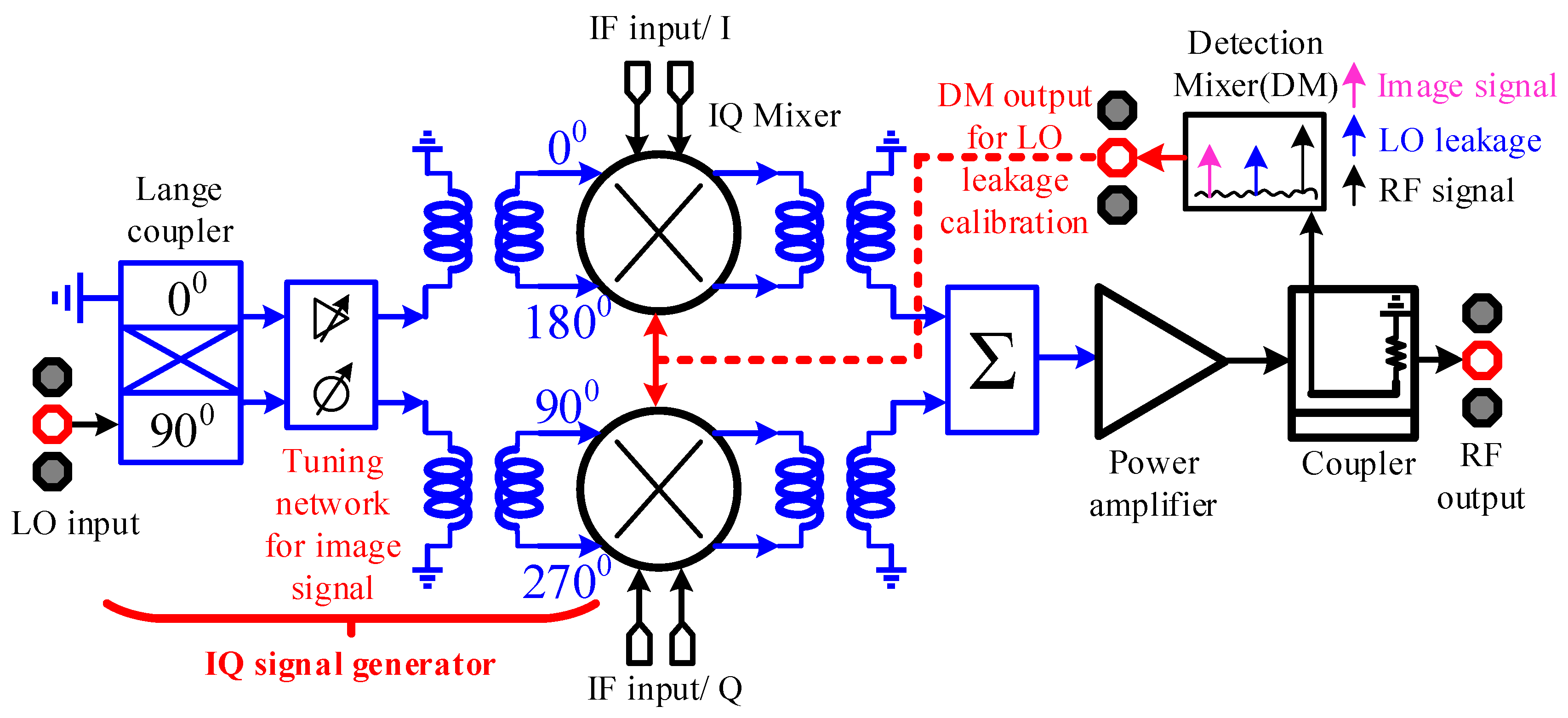
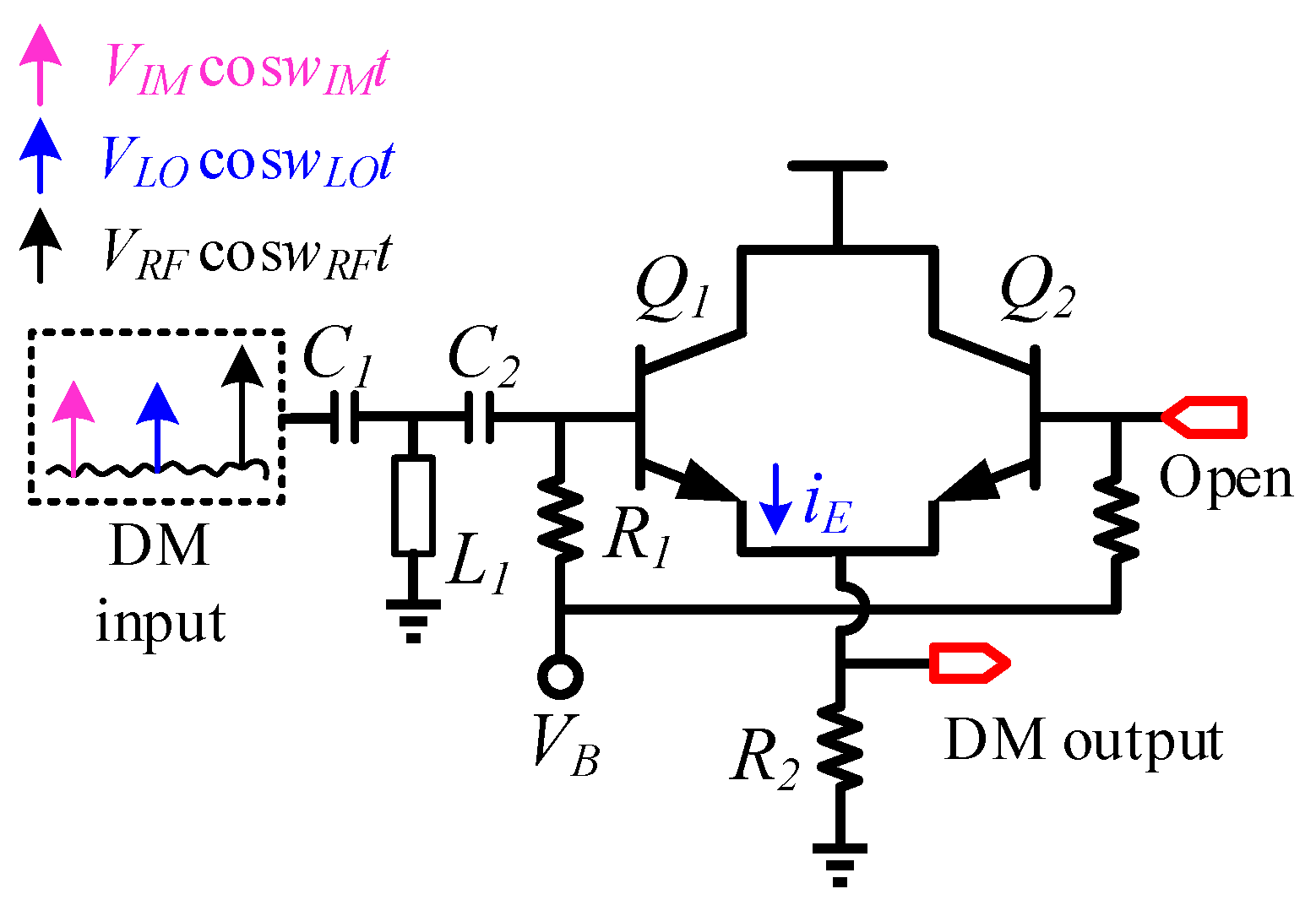
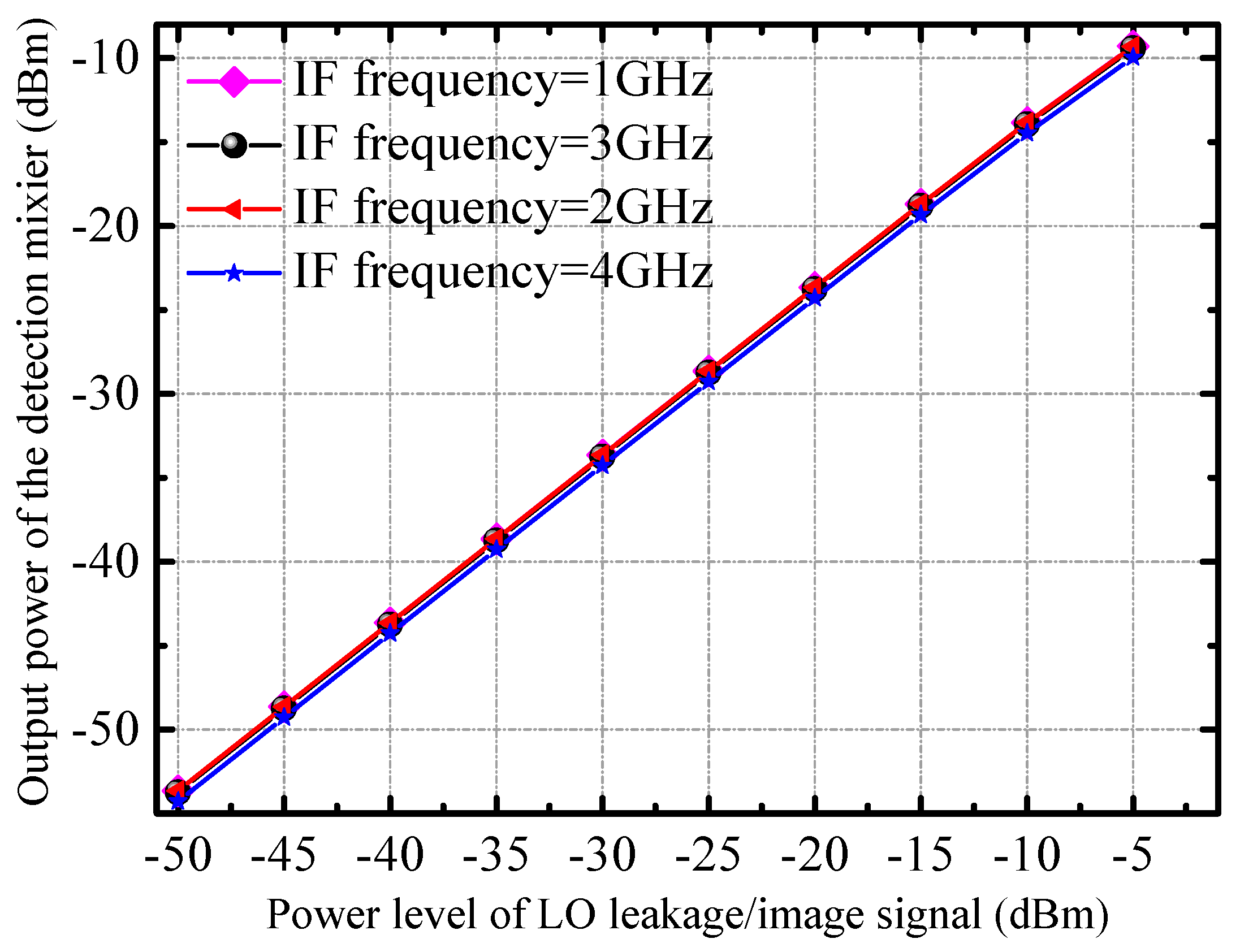

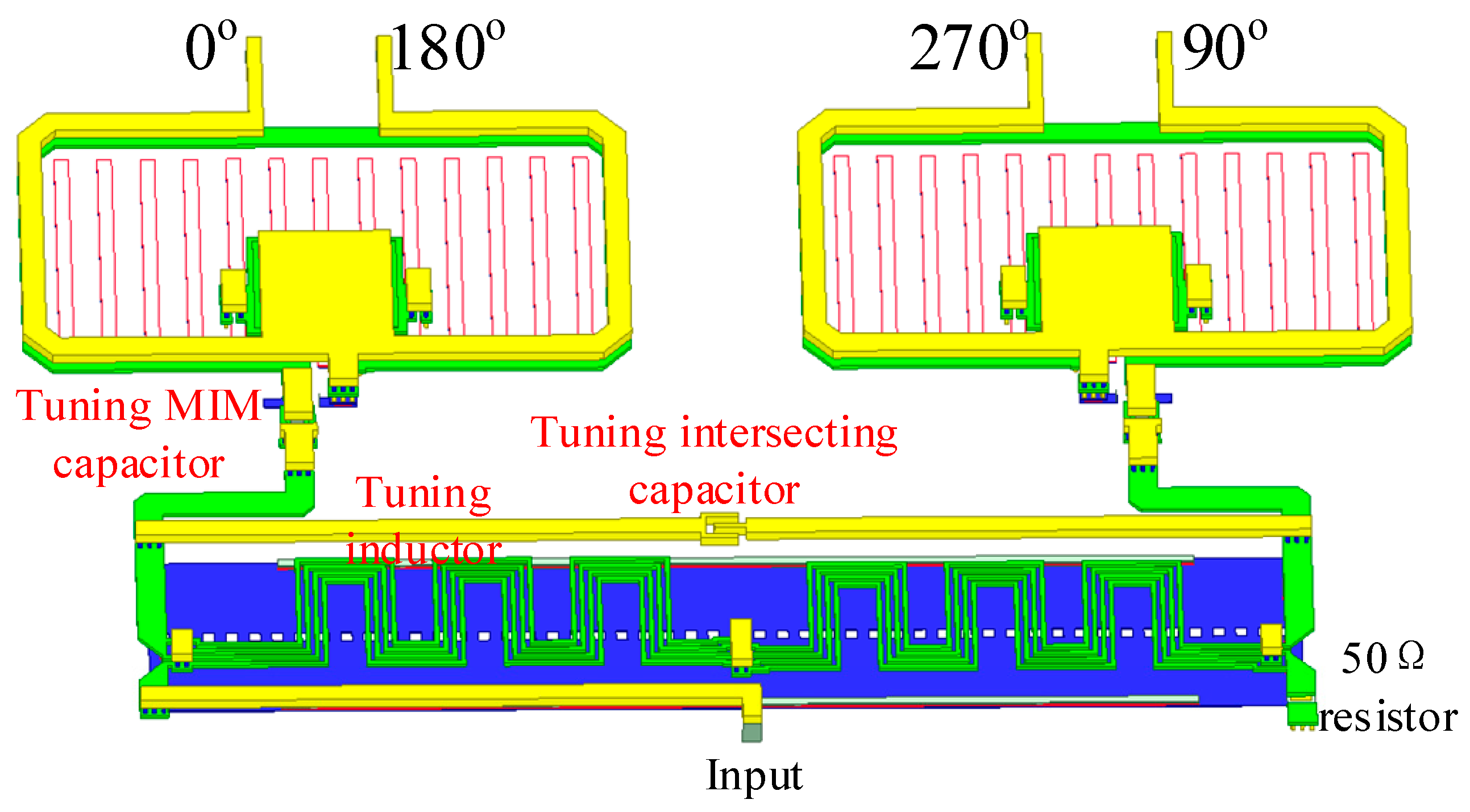
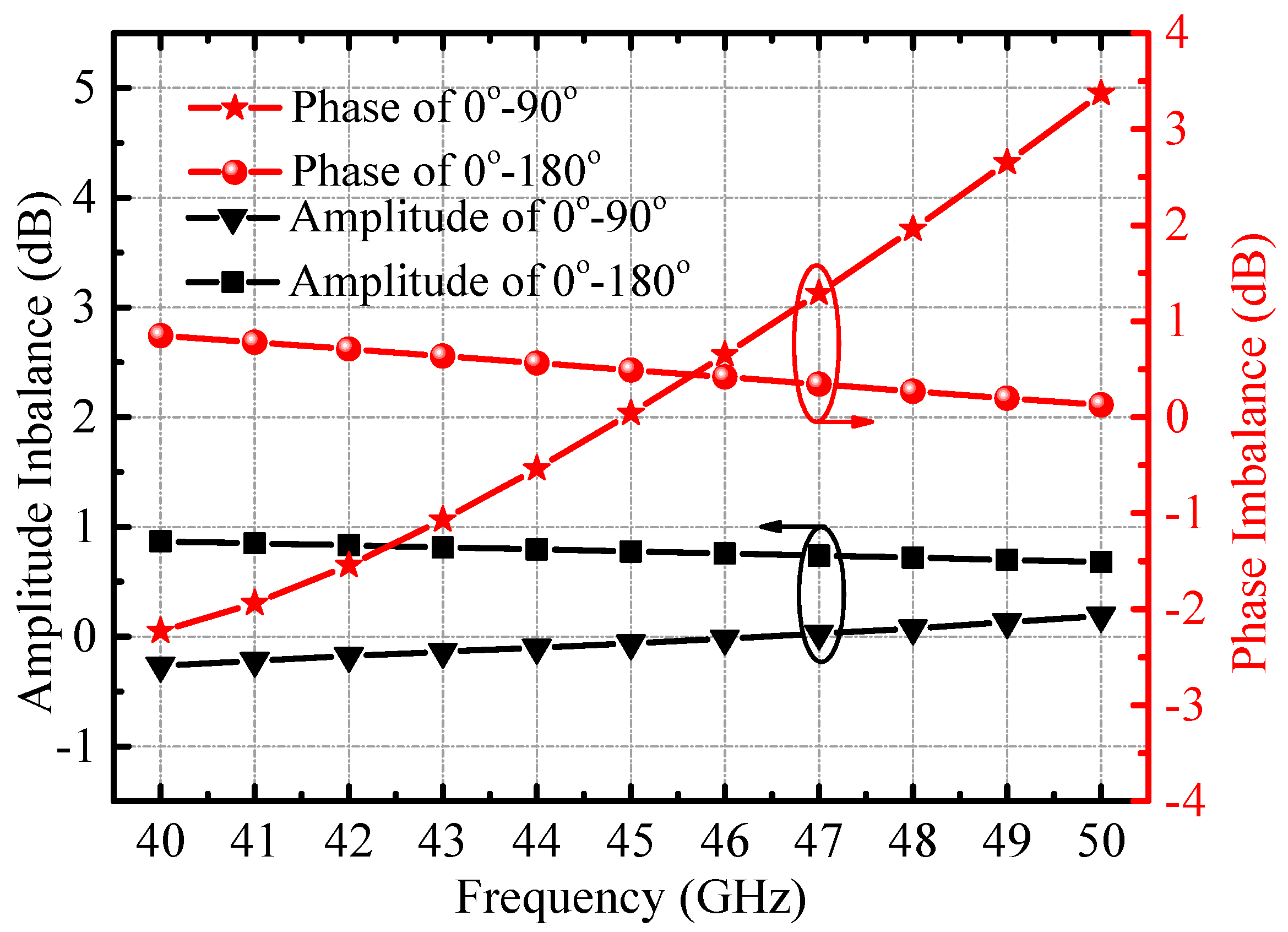

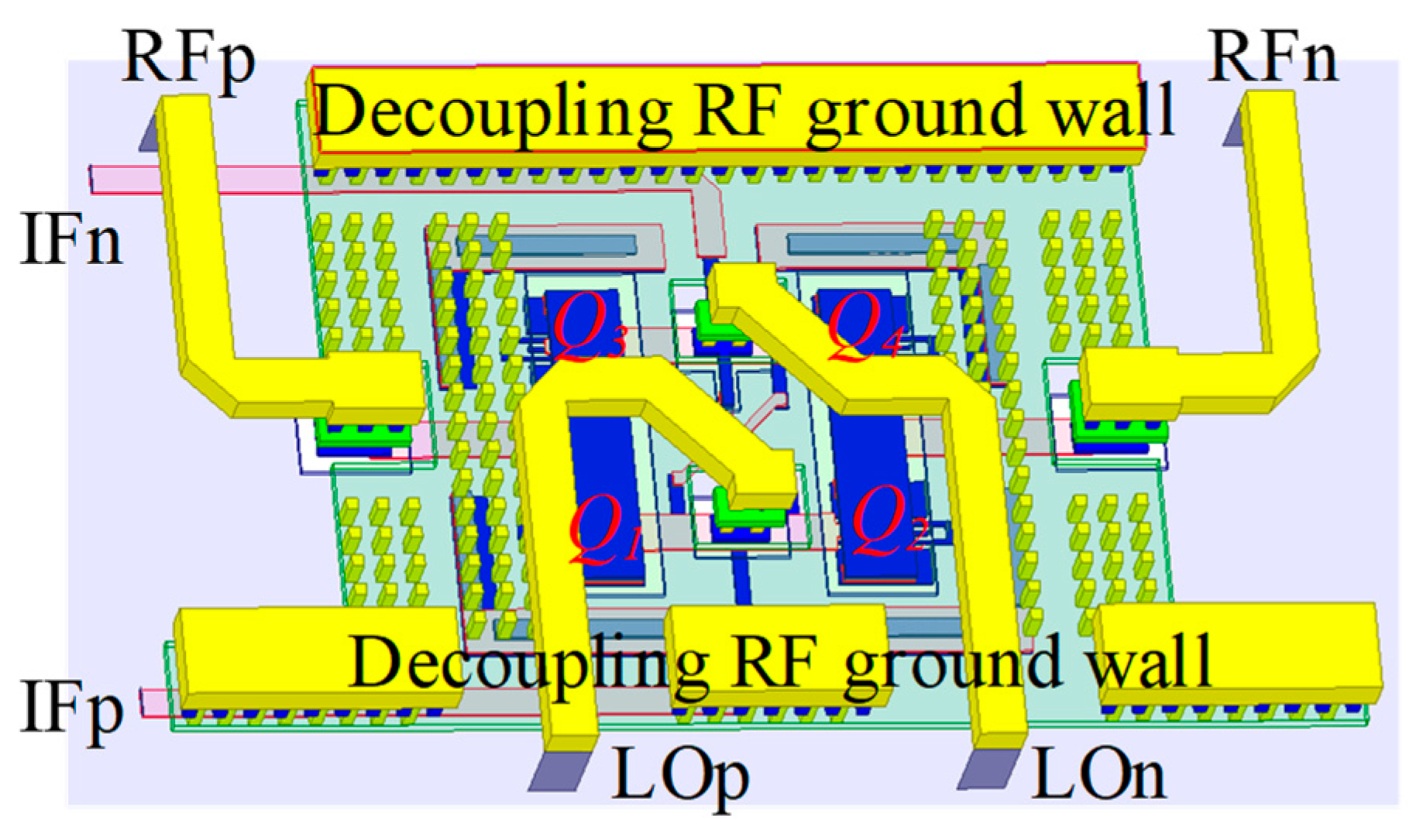
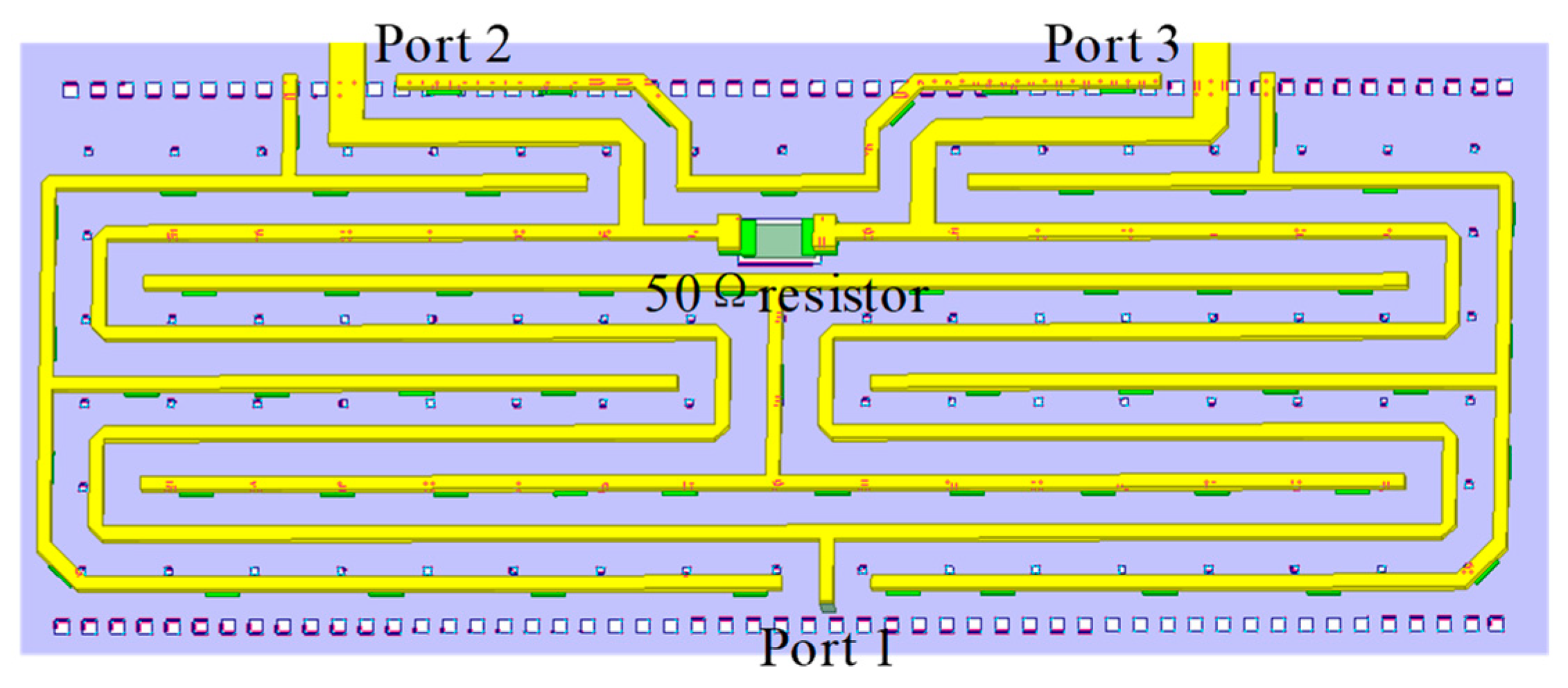

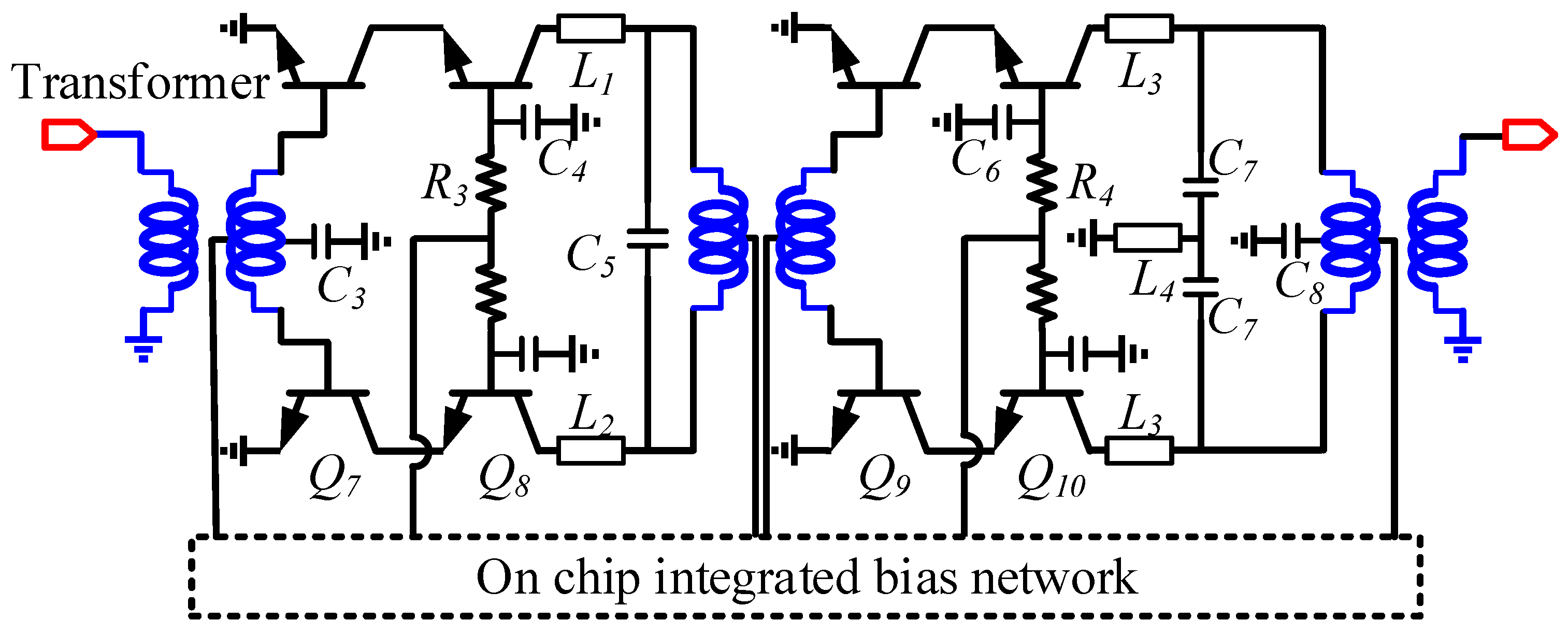
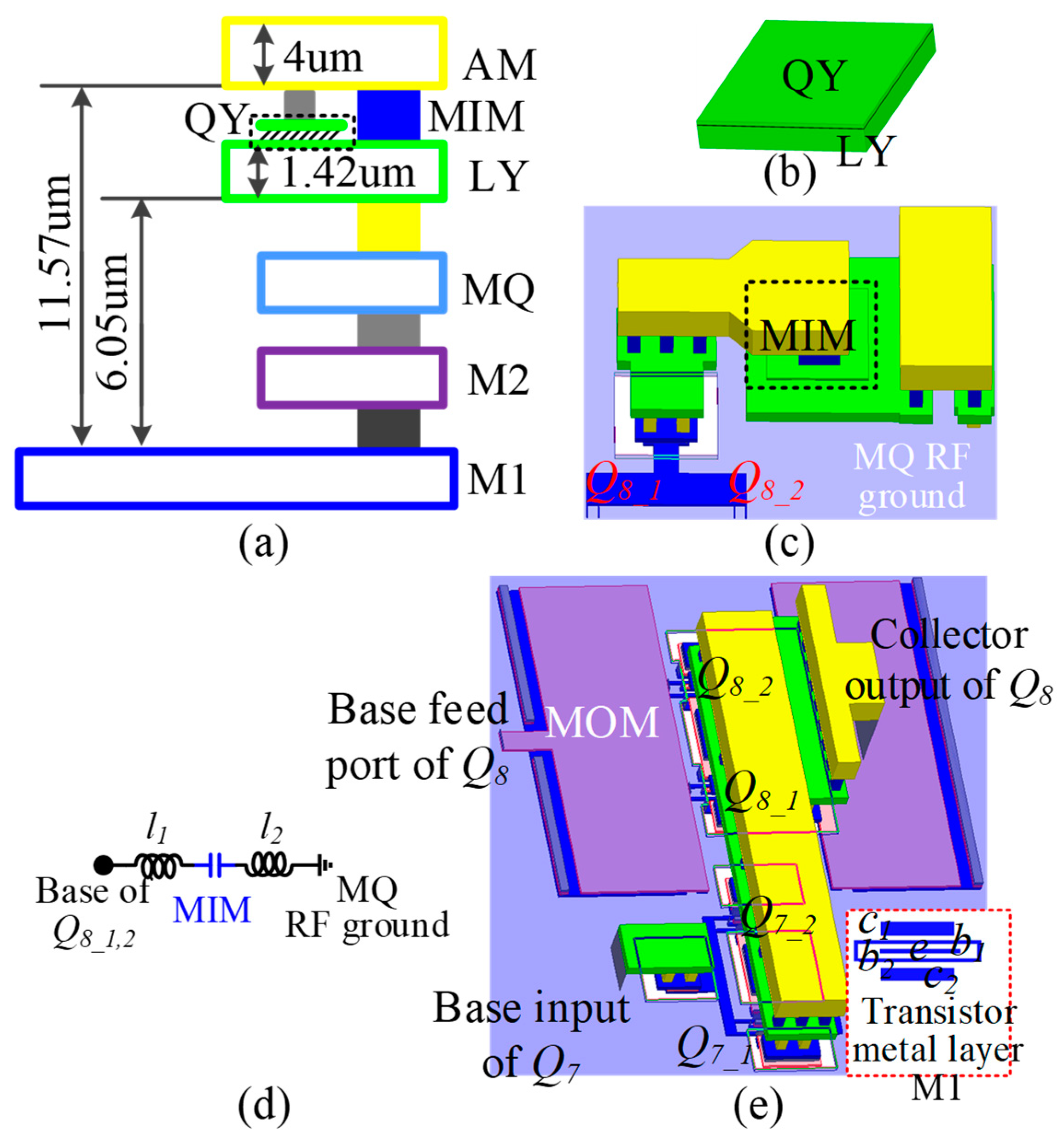

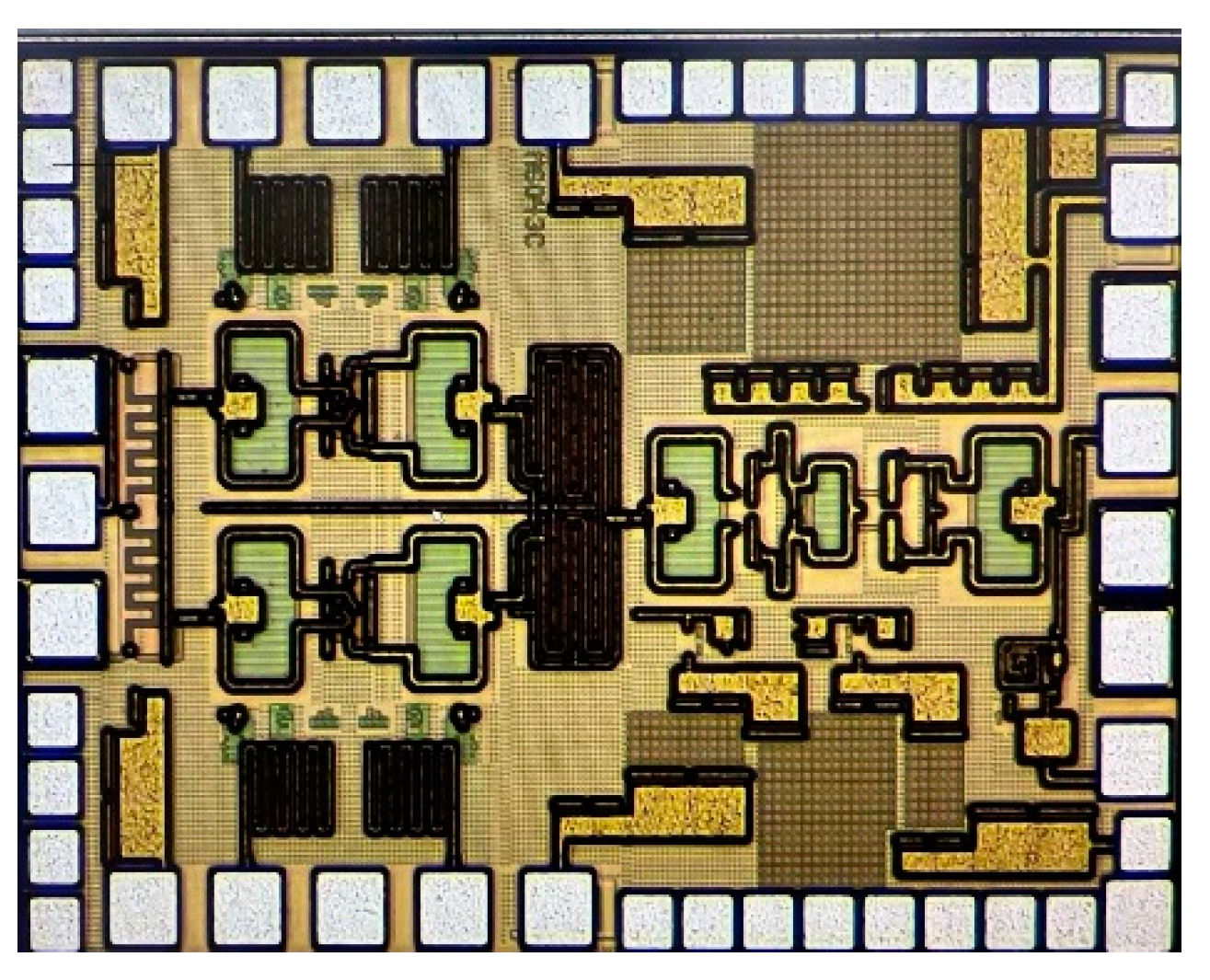
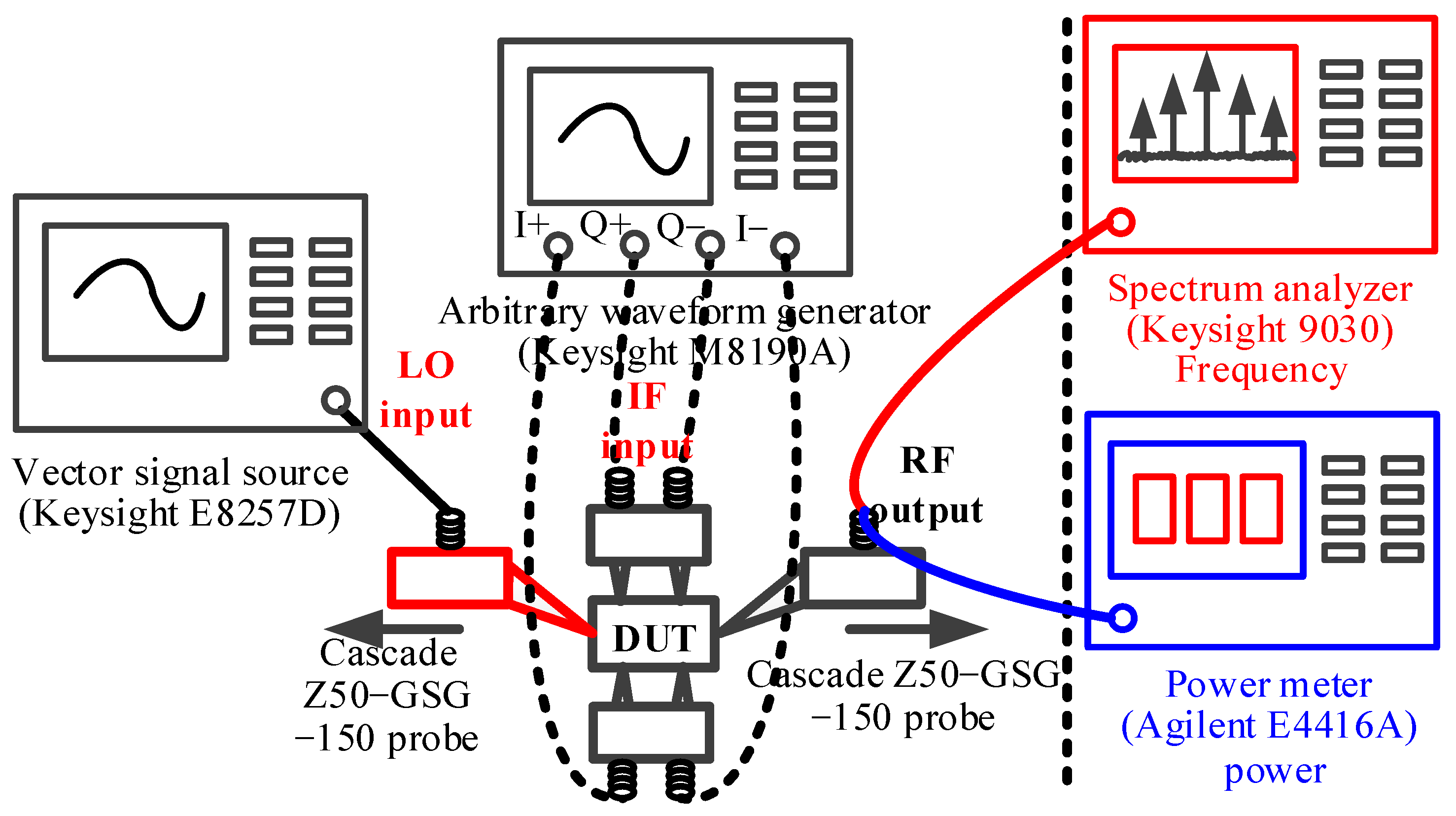
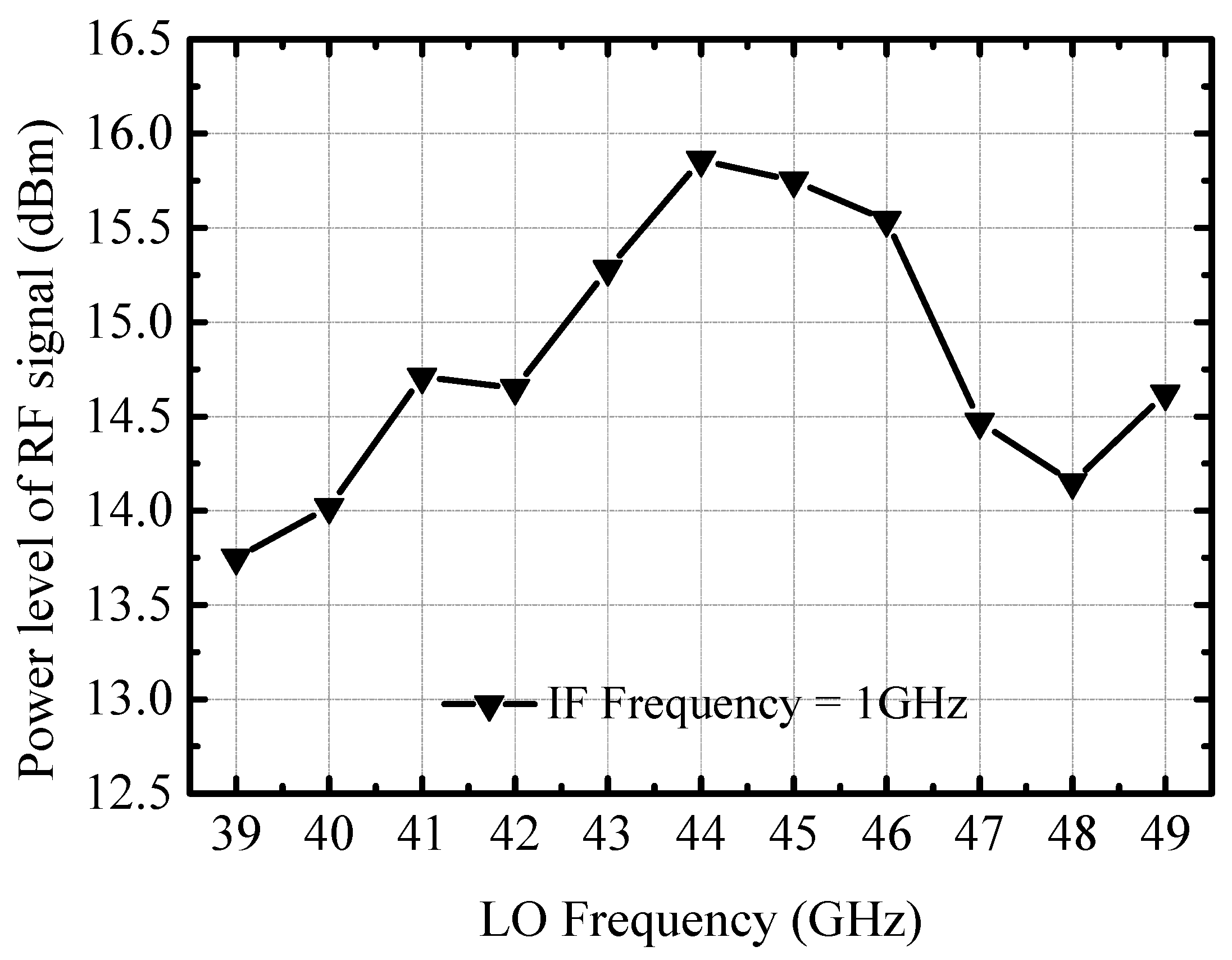
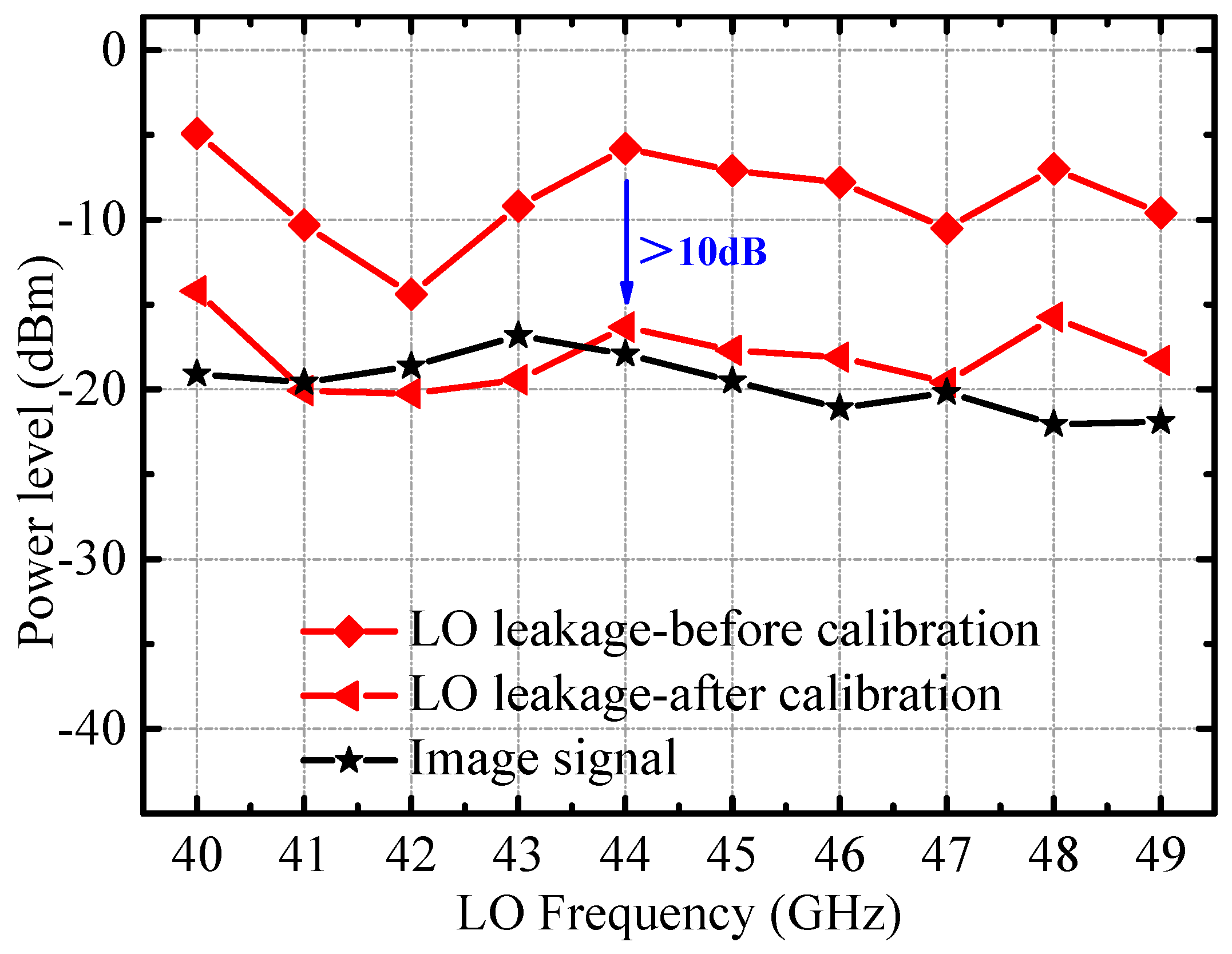
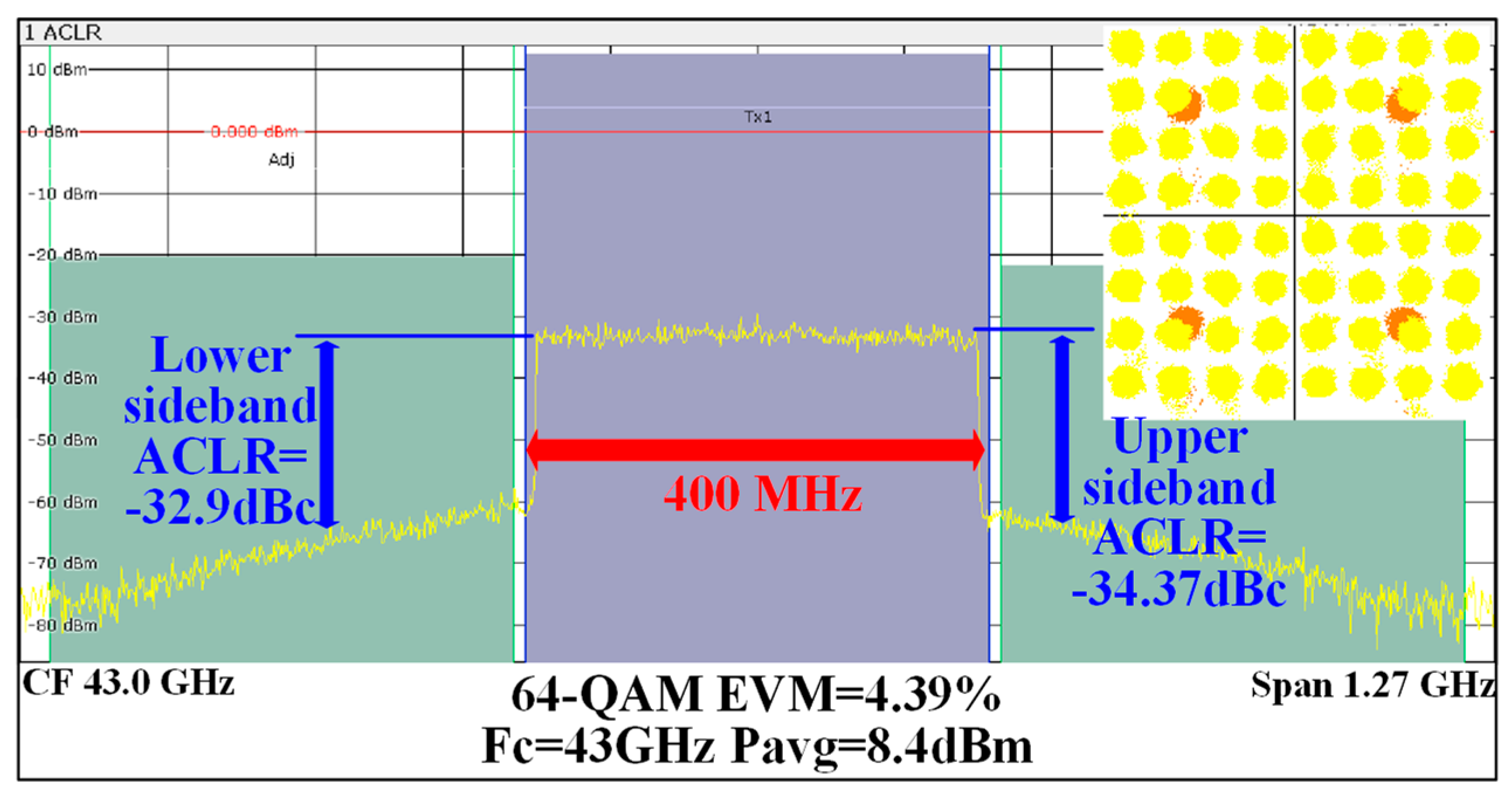
Disclaimer/Publisher’s Note: The statements, opinions and data contained in all publications are solely those of the individual author(s) and contributor(s) and not of MDPI and/or the editor(s). MDPI and/or the editor(s) disclaim responsibility for any injury to people or property resulting from any ideas, methods, instructions or products referred to in the content. |
© 2023 by the authors. Licensee MDPI, Basel, Switzerland. This article is an open access article distributed under the terms and conditions of the Creative Commons Attribution (CC BY) license (https://creativecommons.org/licenses/by/4.0/).
Share and Cite
Zhou, P.; Yan, P.; Chen, J.; Chen, Z.; Hong, W. A 40–50 GHz RF Front-End with Integrated Local Oscillator Leakage Calibration. Micromachines 2023, 14, 2105. https://doi.org/10.3390/mi14112105
Zhou P, Yan P, Chen J, Chen Z, Hong W. A 40–50 GHz RF Front-End with Integrated Local Oscillator Leakage Calibration. Micromachines. 2023; 14(11):2105. https://doi.org/10.3390/mi14112105
Chicago/Turabian StyleZhou, Peigen, Pinpin Yan, Jixin Chen, Zhe Chen, and Wei Hong. 2023. "A 40–50 GHz RF Front-End with Integrated Local Oscillator Leakage Calibration" Micromachines 14, no. 11: 2105. https://doi.org/10.3390/mi14112105







